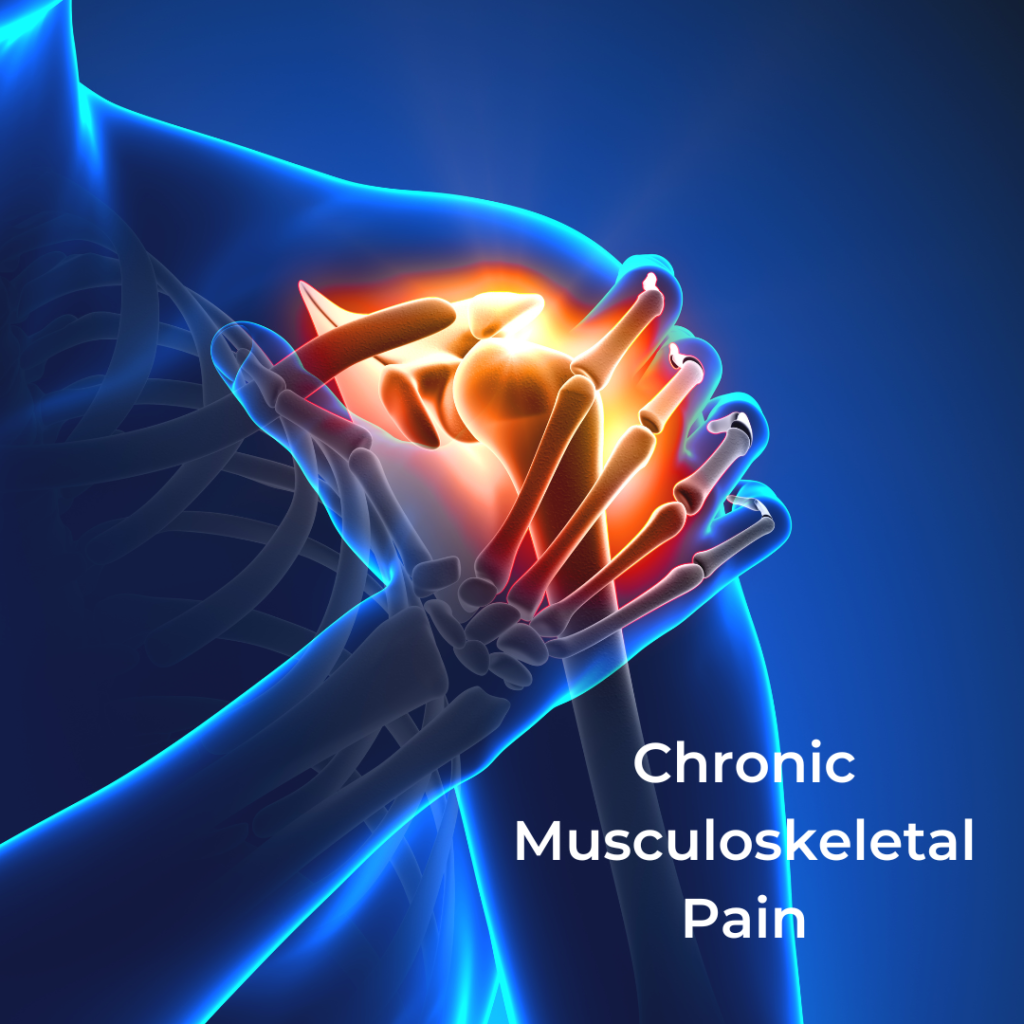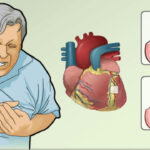Chronic musculoskeletal pain is a prevalent condition that affects millions of individuals worldwide. This persistent pain in the muscles, bones, joints, and soft tissues can significantly impact one’s quality of life. Understanding the root causes, exploring various treatment options, and adopting proactive management strategies are key to alleviating the discomfort and improving overall well-being.

What is Chronic Musculoskeletal Pain?
Chronic musculoskeletal pain refers to pain that persists for more than three months and affects the body’s soft tissues, muscles, ligaments, tendons, bones, and joints. Unlike acute pain, which results from an injury or specific event, chronic pain tends to develop over time and may continue even after the original injury has healed. It can range from mild to severe, often interfering with daily activities and reducing an individual’s mobility and quality of life.
Common Causes of Chronic Musculoskeletal Pain
Chronic musculoskeletal pain can arise from a variety of underlying factors, ranging from physical injury to more complex conditions. Identifying the root cause is essential in determining the most effective treatment plan.
1. Injuries and Trauma
Previous injuries, such as fractures, sprains, and strains, may lead to chronic pain. In some cases, the initial injury may not heal properly or may cause long-term damage, leading to persistent discomfort.
2. Arthritis
Arthritis, including osteoarthritis and rheumatoid arthritis, is one of the leading causes of chronic musculoskeletal pain. The inflammation in the joints causes pain, stiffness, and swelling, which can worsen over time.
3. Postural and Overuse Conditions
Poor posture or repetitive motion can put undue stress on muscles and joints, leading to musculoskeletal pain. Conditions such as carpal tunnel syndrome or tendinitis are often linked to overuse or improper posture.
4. Fibromyalgia
Fibromyalgia is a chronic condition characterized by widespread musculoskeletal pain, fatigue, and tenderness in specific areas of the body. The exact cause is unknown, but it is thought to involve abnormal processing of pain signals in the brain.
5. Degenerative Disc Disease
Degenerative disc disease refers to the breakdown of the discs in the spine, which can lead to chronic back and neck pain. This condition is often associated with aging and wear and tear on the spine.
6. Chronic Myofascial Pain
Chronic myofascial pain syndrome involves muscle pain and the formation of trigger points—sensitive spots within muscle tissue that cause pain and stiffness.
Symptoms of Chronic Musculoskeletal Pain
The symptoms of chronic musculoskeletal pain can vary greatly, depending on the underlying cause. Common symptoms include:
- Constant or intermittent pain in muscles, joints, or bones
- Stiffness or limited range of motion in affected areas
- Swelling around joints or muscles
- Fatigue and general weakness
- Tenderness in specific regions, such as the back, neck, or shoulders
- Difficulty performing daily activities due to pain
Effective Treatment Options for Chronic Musculoskeletal Pain
The treatment of chronic musculoskeletal pain requires a multifaceted approach, as no single treatment method works for everyone. A combination of medical treatments, physical therapies, and lifestyle adjustments can help manage pain effectively.
1. Medication for Pain Relief
Medications are often used to alleviate the pain associated with musculoskeletal disorders. Common options include:
- Non-steroidal anti-inflammatory drugs (NSAIDs): These help reduce inflammation and relieve pain.
- Acetaminophen: A common pain reliever for mild to moderate pain.
- Muscle relaxants: These are prescribed for conditions involving muscle spasms.
- Corticosteroids: Injections or oral steroids are used to reduce severe inflammation in joints and tissues.
- Antidepressants and anticonvulsants: These may be prescribed for conditions like fibromyalgia, which involves central pain processing issues.
2. Physical Therapy
Physical therapy is a cornerstone of musculoskeletal pain treatment. It involves specific exercises designed to improve flexibility, strengthen muscles, and restore function. A physical therapist may recommend exercises tailored to individual needs, aimed at addressing the underlying cause of pain and improving posture and movement.
3. Occupational Therapy
In cases where chronic pain affects daily activities, occupational therapy may help. An occupational therapist teaches techniques to manage daily tasks without exacerbating pain. Adaptive tools or ergonomic adjustments in the home or workplace may also be suggested.
4. Chronic Pain Management Programs
For those with long-term, severe pain, a chronic pain management program may be beneficial. These programs often combine physical therapy, counseling, and medication management to provide holistic care. Cognitive-behavioral therapy (CBT) is often a component of these programs, helping individuals change pain-related thoughts and behaviors.
5. Surgical Interventions
In some cases, surgery may be required to address the root cause of chronic musculoskeletal pain. Options may include joint replacement, spinal surgery, or repair of damaged tendons or ligaments. Surgery is typically considered when conservative treatments fail to provide relief.
6. Alternative Therapies
Certain alternative therapies have shown promise in managing chronic pain. These include:
- Acupuncture: A traditional Chinese medicine technique involving the insertion of thin needles into specific points on the body.
- Massage therapy: Can help relieve muscle tension, improve circulation, and reduce stress.
- Chiropractic care: Focuses on spinal manipulation to treat musculoskeletal pain, particularly in the back and neck.
7. Lifestyle Changes and Preventive Measures
Making certain lifestyle changes can help prevent or minimize chronic musculoskeletal pain. Regular exercise, a balanced diet, weight management, and proper posture are crucial for maintaining musculoskeletal health. Additionally, mindfulness techniques and stress management practices can help manage pain perception.
Preventing Chronic Musculoskeletal Pain
Prevention is always better than cure. By adopting healthy lifestyle habits, individuals can reduce the risk of developing chronic musculoskeletal pain. Here are some strategies to consider:
- Regular physical activity: Engaging in low-impact exercises like swimming, walking, or yoga can improve flexibility and strength.
- Posture awareness: Ensuring correct posture when sitting, standing, or lifting can help avoid strain on the muscles and joints.
- Ergonomics: Adjusting workspaces and equipment to promote proper alignment can reduce the risk of repetitive strain injuries.
- Rest and recovery: Allowing the body sufficient time to recover after physical exertion can prevent overuse injuries.
- Healthy weight: Maintaining a healthy weight can reduce stress on joints, particularly the knees, hips, and lower back.

